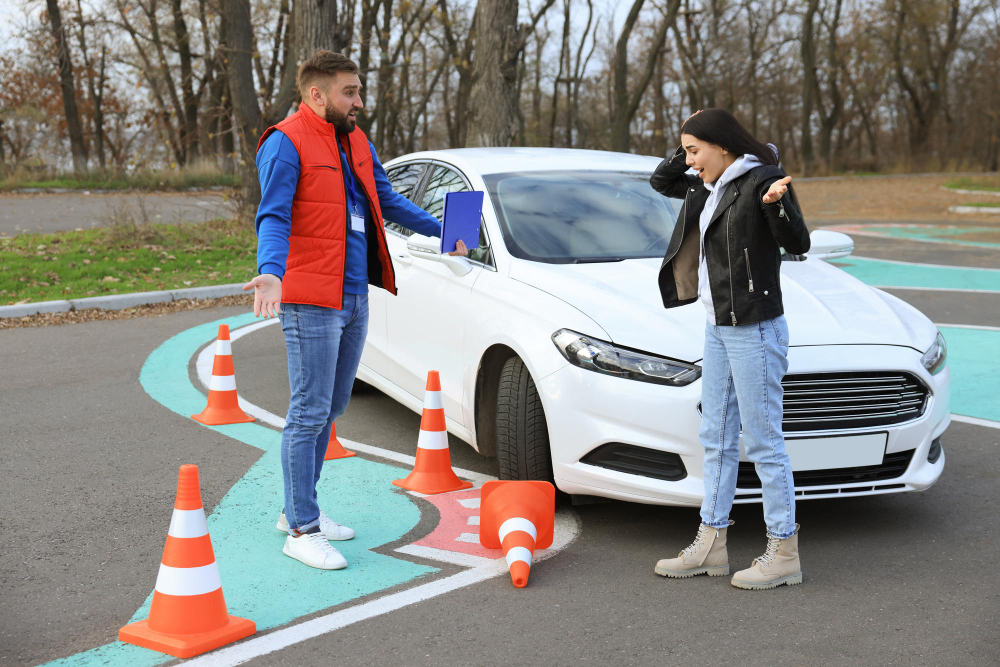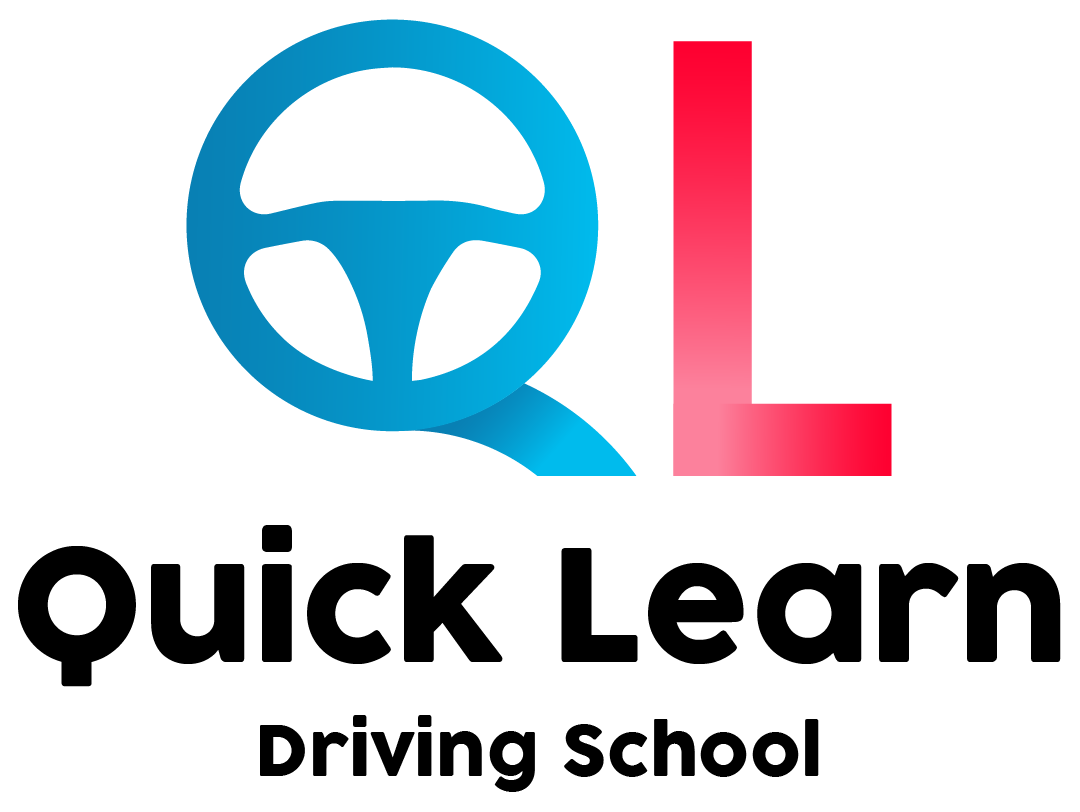
For most learner drivers, the practical driving test is an overwhelming thing. Whereas some nerves are natural, knowing what the primary faults are—and how they affect the test—can help you better prepare and enhance your chances of passing. At Quick Learn Driving School, we believe in giving our students the knowledge they require to drive securely and confidently.
This comprehensive guide concentrates entirely on the primary driving test faults in the United Kingdom: what they are, how they vary from minor faults, and the most common examples that result in immediate test failures. Let’s dig in.
What Counts as a Driving Test Fault?
During your practical driving test, the examiner evaluates how well you control the vehicle, respond to different situations, and follow the rules of the road. Any errors made are recorded as faults, which are grouped into two major categories:
- Minor Faults (alternatively known as driving faults)
- Major Faults
The major faults include the following:
- Serious faults
- Dangerous faults
Comprehending Major vs Minor Faults
Before we analyse the list of major faults, it is significant to understand the difference between minor and major faults.
Minor Faults
These are minor errors that don’t pose a danger to anyone but do indicate areas that need enhancement. While you are allowed to make a few minor faults (up to 15), too many can still lead to failure. Repeating the same minor fault can also result in it being upgraded to a severe one.
Major Faults
Major faults are significantly more severe and are split into two types:
Serious Faults: These take place when you make a mistake that could become dangerous, depending on the circumstances, even if it did not actually result in a hazardous situation.
Dangerous Faults: A dangerous fault is recorded when your driving causes an immediate risk to you, the examiner, or other road users. These faults lead to an instant test failure.
Note: Making only one serious or dangerous fault will fail your driving test.
Most Common Major Faults in UK Driving Tests
Below is a comprehensive list of the most common major faults that lead to test failures. Familiarising yourself with them will aid you in staying alert and focused during your test.
1. Junction Observations
Failing to make proper observations at junctions is a major reason for failure. Examiners usually mark this as a Junctions – Observations fault.
Primary mistakes include the following:
- Pulling out at a junction without checking both directions.
- Misjudging the speed or distance of oncoming traffic.
- Entering a roundabout with insufficient observation.
- Overlooking crossroad checks or failing to look left when turning left.
2. Mirror Checks Before Changing Direction
Inaccurate or missing mirror checks are generally marked as Mirrors – Change direction faults.
Examples of primary mirror faults include the following:
- Failing to check mirrors prior to signalling or changing lanes.
- Changing direction without utilising the mirrors appropriately.
- Not checking mirrors when leaving a roundabout.
- Causing another road user to slow down because of inadequate mirror use.
Stick to the classic mirror-signal-manoeuvre routine each time to prevent this.
3. Steering Control
Having appropriate control over your steering is essential. Loss of control here leads to a Control – Steering fault.
Causes of failure include the following:
- Steering too late or not enough when turning.
- Insufficient control on bends or curves.
- Mounting the pavement when pulling over.
- Swinging too wide or cutting corners.
4. Improper Positioning at Junctions
Imprecise road positioning—particularly when turning—can be marked as a Junctions – Turning right fault.
Common positioning problems include the following:
- Sitting in the left lane when intending to turn right.
- Obstructing other vehicles while waiting to turn.
- Not aligning correctly at T-junctions or roundabouts.
5. Unsafe Move-Offs
Beginning to drive without appropriate checks or consideration for safety is a common failure point and is recorded as a Moving off – Safety fault.
Frequent causes include the following:
- Pulling away into the path of an approaching vehicle.
- Causing another car to slow down or change course
- Not checking blind spots prior to moving off.
6. Failure to Respond to Traffic Light Signals
These are marked as Response to signs – Traffic light faults. Not reacting appropriately to traffic lights may lead to a severe or even dangerous situation.
Common major faults include the following:
- Failing to stop at a red light.
- Proceeding on a green light without checking if the junction is clear.
- Blocking cycle boxes or stopping past the stop line.
- Hesitating too long at a green light when it is safe to go.
7. Lane Discipline and General Positioning
Inaccurate lane usage or poor road positioning leads to Positioning – Normal driving faults.
Examples include the following:
- Driving unnecessarily in the right-hand lane on dual carriageways.
- Drifting too close to the kerb or centre line.
- Neglecting proper lane rules at roundabouts or intersections.
8. Ignoring Traffic Signs
This is listed as Response to signals – Traffic signs and includes failing to read or follow the posted signs.
Vital errors include the following:
- Not stopping at a stop sign.
- Driving into a no-entry zone.
- Neglecting speed limit signs.
- Misinterpreting directional signs or lane markings.
9. Lack of Control When Moving Off
This is recorded as a Move off – Control fault. You must always be in complete control when beginning to drive.
Reasons for failing include the following:
- Rolling backwards on a hill.
- Moving off without choosing a gear.
- Repeated stalling or lack of clutch control.
10. Reverse Parking Faults
When executing a bay park or parallel park, inadequate control may lead to a Reverse park–control fault.
Leading mistakes include the following:
- Failing to park within the lines of a bay.
- Hitting the kerb during parallel parking.
- Requiring too much adjustments or repositioning.
- Losing total control of the vehicle.
Instant Test Failures: No Second Chances
Some actions are so severe that they lead to immediate failure—even if the rest of your test is without fault.
The following are a few examples of scenarios that lead to instant test failure:
Failing the Eyesight Check: Not being able to read a number plate from 20 metres.
Mounting the Kerb: Considered highly dangerous.
Crossing a Solid White Line: Generally indicates a protected area, like a bus lane or stop line.
Causing Another Vehicle to Swerve or Brake: Unsafe actions that affect others on the road.
What Happens After You Fail?
If a major fault happens during driving, your test will return to the centre. The examiner will:
- Inform you of your result.
- Explain which faults were recorded.
- Offer a printed or digital copy of the report.
At Quick Learn Driving School, we suggest reviewing the report meticulously so you can focus on those particular areas prior to retaking your test.
Major Driving Skills Each Learner Should Master
Building a sound foundation behind the wheel begins with enhancing core driving techniques. These skills not only elevate confidence but are necessary for secure and responsible driving.
Fundamental Techniques to Concentrate On:
- Clutch Mastery: Learn how to shift gears seamlessly while avoiding engine stalls.
- Efficient Steering: Utilise the push-pull method for improved control, particularly around bends and during manoeuvres.
- Miror and Blind Spot Checks: Remain alert by constantly scanning mirrors and checking blind spots prior to any move.
- Speed Regulation: Adjust your speed according to the road type, weather conditions, and traffic flow.
- Sound Judgement: Practice making calm, risk-free decisions at bustling intersections and roundabouts.
Bouncing Back After a Failed Driving Test
Failing a driving test can be disheartening, but it is a common part of the learning process. What matters most is how you respond and prepare for your next attempt.
Take a Moment to Reflect
Give yourself time to process the result. Review your test sheet to comprehend where things went wrong—this is the initial step toward enhancement.
You’re Not Alone
Most learners require more than one try. Government data for 2024/25 shows a pass rate of around 48.5%, indicating that nearly half of test-takers do not succeed on their first attempt.
Concentrate on What Needs to Improve
Discuss the feedback with your instructor and target the particular areas that require attention, whether these are minor mistakes or more significant faults.
Get Ready and Book Again
Once you feel you are well-prepared, schedule another test right away. The sooner you rebook, the less likely nerves or hesitation will hold you back.
Long Story Short!
Comprehending and avoiding major faults is necessary if you want to pass your UK driving test. By knowing what the examiner looks for and practising secure, consistent driving habits, you can considerably decrease the risk of failure.
At Quick Learn Driving School, our instructors aid you in developing the skills and confidence to prevent these crucial errors. With the proper preparation and awareness, passing your test is absolutely within reach.
Ready to begin driving with confidence? Schedule your lesson today with Quick Learn Driving School — and make the first move toward becoming a safe, competent, and licenced driver.

